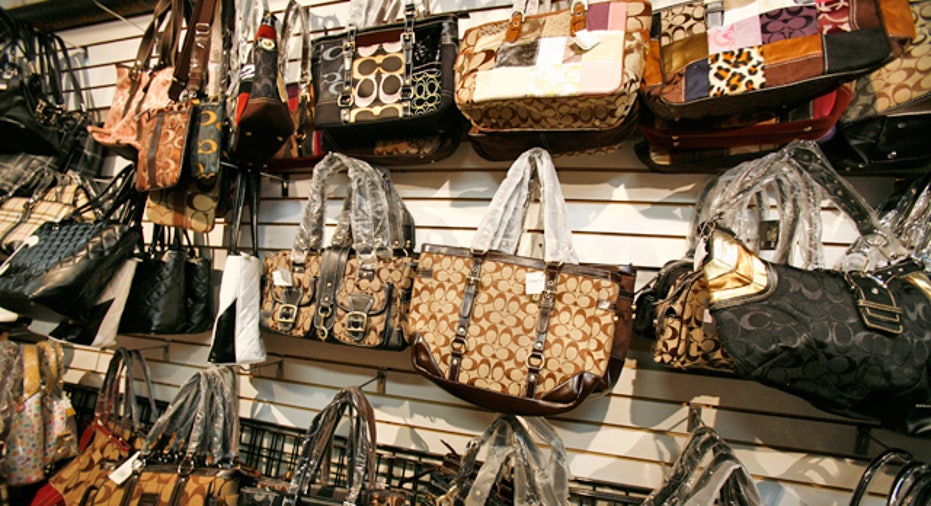Six Ways to Tell if a 'Designer' Handbag is Fake

The fashion industry may have a high tolerance for fake people, but its tolerance for fake merchandise is an entirely different story.
Knockoff footwear, handbags and other items have always been a thorn in designers’ sides – especially in the online marketplace, where the problem only seems to be getting worse. In 2010, the U.S. government logged 42% more merchandise seizures at express consignment and mail facilities than in 2009, citing the “continued growth” of websites that sell pirated products.
Luxury goods maker Chanel is the latest designer to take action on the digital front, filing a lawsuit last week against 399 websites it claims are peddling fake Chanel-branded items. Louis Vuitton and Tiffany have also filed similar lawsuits within the last year.
While manufacturers have billions of dollars to lose over counterfeit goods (the government estimates that the $188.1 million worth of knockoffs it collected last year would have been worth $1.4 billion had the items been the real versions), consumers also have a lot on the line. True, many online shoppers are probably savvy enough to sniff out websites that seem untrustworthy (i.e. – “chanelhandbags-outlet.net”), but even the sharpest shoppers are still at risk of being fooled by a well-crafted eBay or Craigslist ad.
That’s where Angie Houston comes in. Houston is the founder of MyPoupette.com, a website that offers authentication services for buyers and sellers of designer bags and other luxury goods.
Having been in business since 1999, Houston says fakes are harder to spot now than they once were for two main reasons: counterfeiters have gotten a lot more sophisticated and manufacturers have gotten a bit sloppy. She says that while no replica is perfect, the flaws are getting harder to spot – even the multicolor logo bag Louis Vuitton introduced a few years ago, which made use of about 30 colors, was copied in a realistic way.
“There really is no bag that’s too difficult to copy, she says.
On the designer side, Houston says that since the early 2000s, there has been a subtle but traceable decline in the way some high-end companies have been making their products, probably as a result of outsourcing. She says even handbags that are said to be made in France and Italy may have parts that are made in other countries and possibly with less precision than in the past.
“When you look at workmanship in the products these days…they’re not finished the way they used to be back in the good old days,” she says.
A handbag enthusiast who, at one point in her life, owned more than 300 pieces of Louis Vuitton, Houston says she and her staff of four see about 5,000 handbags a year – 90% through photos, 10% in person. For every bag that comes through, Houston does a side-by-side comparison using a company database that currently houses more than three million handbag photos. She estimates that about 75% to 80% of the bags she sees are indeed fake.
While Houston says there are a multitude of factors that need to be explored when determining whether or not a handbag is genuine, she offered these tips for those wondering if their designer find is the real thing:
1. Check the hardware. Zippers, clasps and closures should all have the same color and finish, unless the bag is made by Chloe, which often makes use of mixed hardware. Zippers should open and close smoothly.
2. Scope out seaming, shape and symmetry. Seams generally do not have glue, except perhaps on wallets. On Louis Vuitton monogrammed canvas items, the symbols typically mirror each other on right and left seams. Gucci and Fendi have started to do the same since they were taken over by LVMH. Check to make sure the bag you see is in a shape and pattern that the designer makes.
3. Test the text. The logo should be straight and spelled correctly, and any engraving or embossing should be neat and accurate as well. Instruction books should not have misspellings or be photocopied.
4. Smell it. Leather items should smell like leather – not like glue, rubber or chemicals.
5. Be wary of massive deals. If a bag normally retails for $800 or $1,200 and someone’s offering it for $100 or $200, you may be getting scammed.
6. Stay away from websites that present themselves as designer bag outlets. Many manufacturers have their own outlet stores for the bags they didn’t sell during the season. If you’re on a website that isn’t run by the manufacturer itself and see very expensive bags that you can buy multiple copies of, be wary.



















